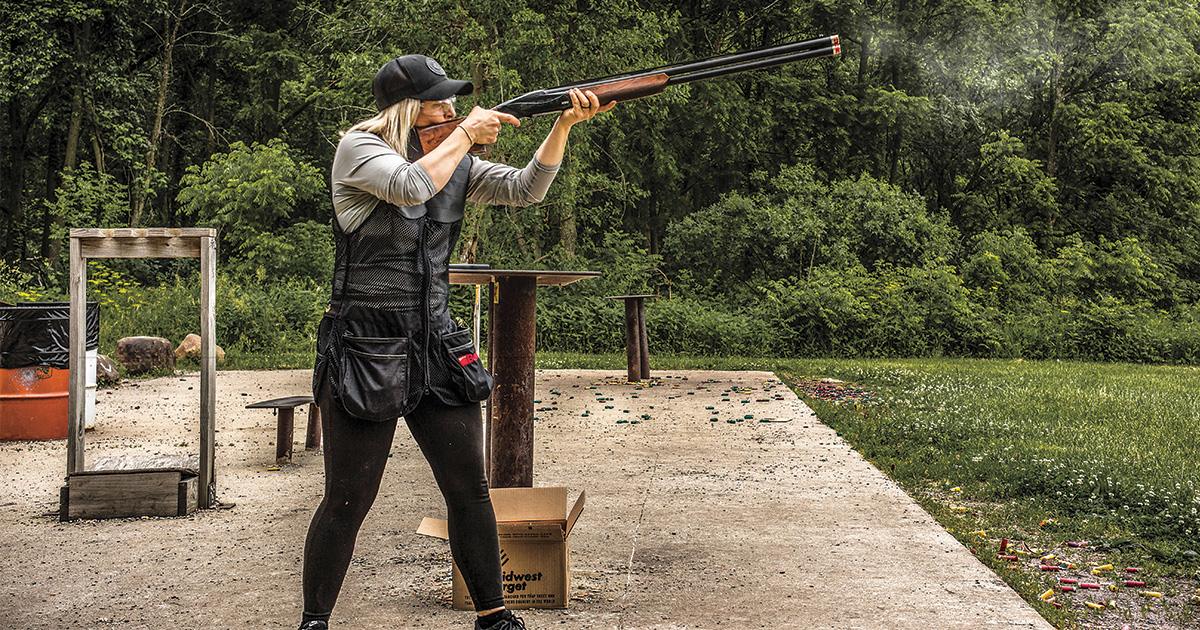Shotgunning: Preseason Workout
Shoot better this season by getting your body and mind in shape now
Shoot better this season by getting your body and mind in shape now


Join a local trap or sporting clays league can help you hone your shooting skills during the off-season.
Shooting a shotgun is an athletic endeavor, like swinging a baseball bat or throwing a football. And, like other athletes, shotgunners perform best when they're in shape. Work on your conditioning this summer, and you'll shoot better when waterfowl season rolls around.
Start with a general fitness program to build strength, flexibility, and endurance. Resistance training can help you mount your shotgun repeatedly over the course of a hunt, swing from the hips, and sit up quickly in a layout boat or blind. Yoga and other flexibility exercises extend your range of motion so you can swing a gun without binding, which is especially important when your feet are stuck in the mud or you're otherwise limited. Cardio training builds a base of endurance to ensure that you're not too tired to shoot well after a long trek to the hole. Sleep, hydration, and diet are important too, as they are with any athletic activity. Here are some specific physical and mental exercises to keep you shooting straight.
This is a staple exercise for Olympic skeet shooters, who face 65 mph targets and must start with an unmounted gun. At home, begin with an unloaded shotgun, holding the buttstock at your hip and the muzzle pointing 45 degrees upward. Swing the muzzle along a seam in the ceiling and simultaneously bring the stock to your face, not your shoulder. Be smooth, not fast. At first, you won't be able to do many good mounts before your arms get tired. Start with five or 10 swings to the left and five or 10 to the right. Then work your way up, focusing on proper form. A good goal is 20 repetitions on each side, although Olympic shooters will often do 100 on each side every day.
Your eyes benefit from workouts too. Try a Brock string—two or three colored beads mounted on a string that is several feet long. Attach one end of the string to a wall and hold the other end taut to your nose, with the closest bead about six inches away. With both eyes open, switch your focus from bead to bead. This will help your eyes learn to work together and shift focus quickly.
The best shooters focus on a specific part of a target, like a bird's head, bill, or eye. Baseball players develop focus by using balls that have numbers and shapes on them. Have a friend toss a ball to you, past you, or from behind while you try to pick out what's marked on the ball.
To work on your peripheral vision, draw a line around the middle of a drinking straw and have a friend hold it horizontally at arm's length from you. Holding a toothpick in each hand, keep your eyes on the line and try to slide the toothpicks into the ends of the straw.
The mental side of shooting matters as much as the physical. Try visualization—a form of mental rehearsal practiced by many elite athletes. Picture yourself in the blind and imagine birds coming into range. See yourself doing all the things you need to do to make a good shot. The better you can picture every detail, the more effective this exercise becomes.
Train yourself to think a "trigger thought" as birds approach, such as "pick one bird" or "eye on the target, head on the stock." Trigger thoughts are most effective when you keep them simple and related to shooting fundamentals. "Keep your head down" works much better than "make this shot." Your trigger thought is also your cue to stop thinking and let your eye-hand coordination take over.
Finally, try some competitive shooting, whether in tournaments, in local leagues, or just by keeping score when you shoot with friends. When every shot counts, you soon learn the value of the mental game. Think positive thoughts, let go of bad shots, and don't fret about hits and misses.
Ducks Unlimited uses cookies to enhance your browsing experience, optimize site functionality, analyze traffic, and deliver personalized advertising through third parties. By continuing to use this site, you agree to our use of cookies. View Privacy Policy